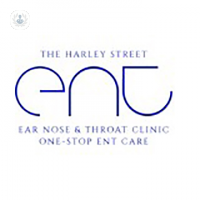Ear wax plugs
Dr Fabio Fanfoni - Otolaryngology / ENT
Created on: 03-24-2014
Updated on: 04-02-2023
Edited by: Jay Staniland
What are wax plugs?
Earwax build-up, also known as earwax plugs, are the accumulation of earwax in the ear, which usually result in hearing loss.
In the external auditory canal there are a series of glands and follicles that create wax, which accumulates in the outer ear, where it is removed by washing the ears. However, often this earwax is not removed properly and forms plugs in the ear canal, which are the most common cause of hearing loss.

Symptoms of earwax build-up
Signs that you have a build-up of wax in your ears include:
- Sensation of blockage in the ear
- Earache
- Tinnitus (noises in the ear that do not come from outside)
- Hearing loss or partial hearing loss
In severe cases, it can cause fever and discharge from the ear.
What causes a build-up of earwax?
Earwax exists to protect the ear from bacteria, dust, water and external agents in general. However, some people produce more earwax in their ears than is removed, leading to wax building up and hardening in the ear canal. Also, during washing, the wax can accidentally be pushed deeper into the ear, blocking it.
Can wax plugs be prevented?
Good hygiene of the ears is fundamental to avoid the accumulation of wax that causes the plugs. While it is true that some people’s ears produce more wax than others, more necessary will be a routine cleaning of the ears to remove excess wax.
Treatment of build-ups of earwax
In some cases the build-ups of wax may disappear by softening the wax, for which water or baby oil is usually used. In most cases, the wax plugs will require a professional wash with a syringe that will dissolve the wax with water under pressure. It is recommended to leave this treatment in the hands of an otolaryngologist (ENT specialist) to avoid damage to the eardrum. The otolaryngologist may also act on the earwax plug by other methods, such as suctioning the ear canal or using a curette.








